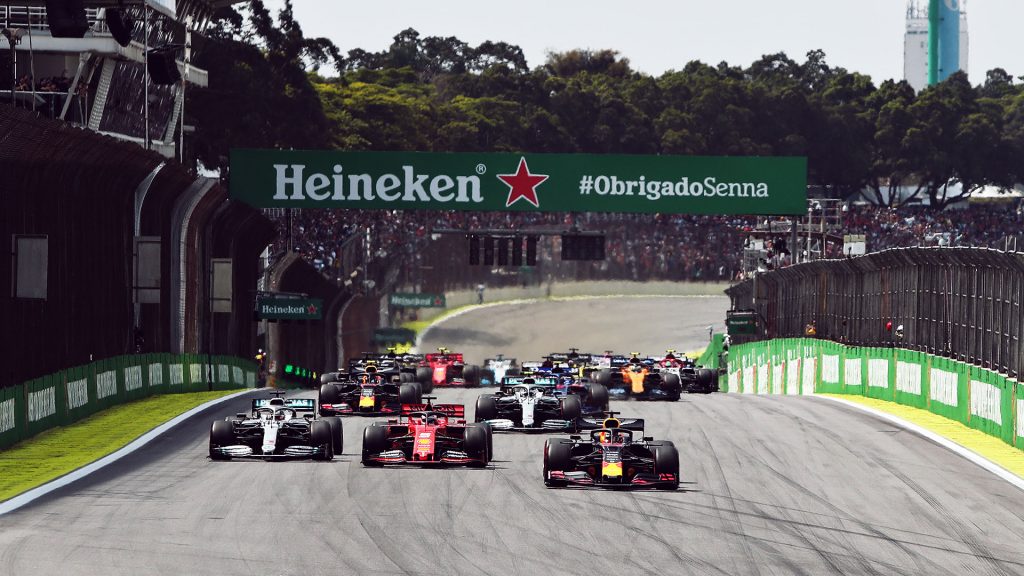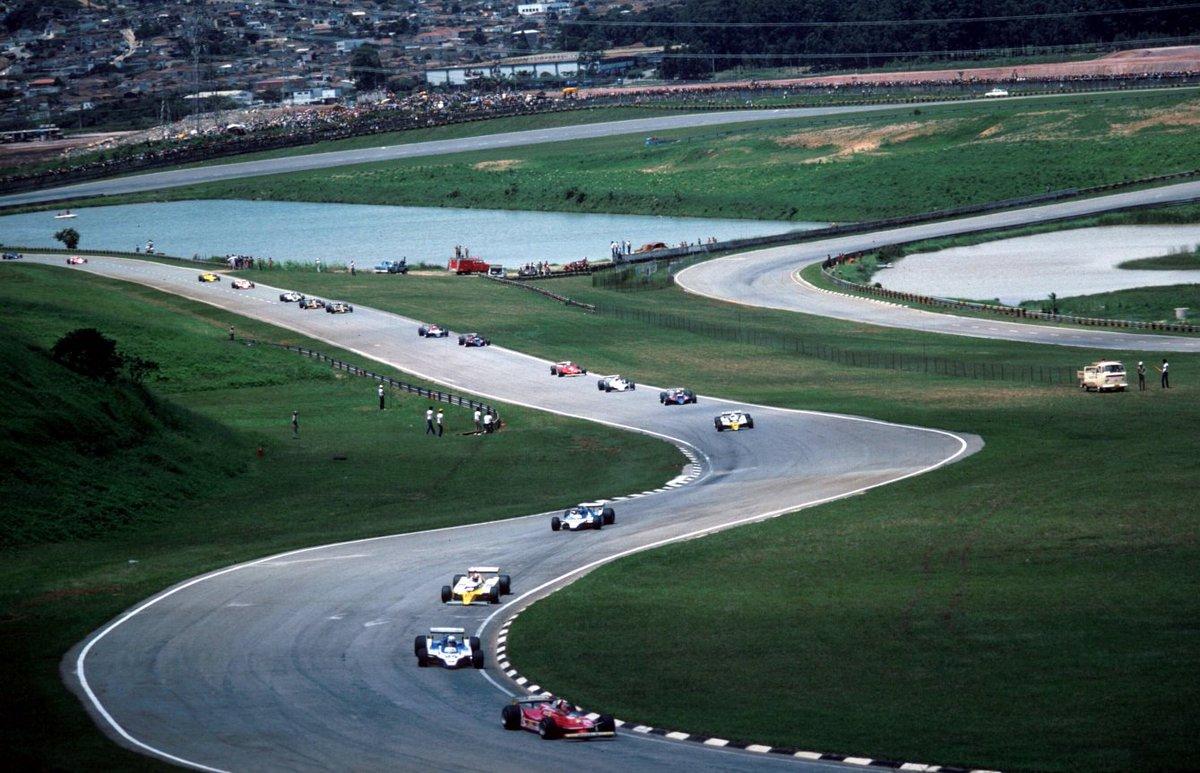The Brazilian Grand Prix will take place at the Interlagos circuit this weekend – who has been the fastest at this venue?
The Brazilian Grand Prix made its first appearance in 1972 at the Interlagos circuit, initially not being a part of the Formula One World Championship. It was in 1990 when the Grand Prix returned to a modified Interlagos circuit, and it has been the host location ever since.
Interlagos is renowned for its challenging and thrilling races, solidifying its status as one of the most demanding and exciting tracks on the Formula 1 calendar. In the inaugural race on the updated Interlagos track in 1990, Alain Prost emerged as the victor, achieving his 40th career victory, a record at that time, and securing his sixth Brazilian Grand Prix win. Let’s take a look which Formula 1 driver holds the fastest lap record at this Grand Prix.

Valtteri Bottas, behind the wheel of his Mercedes W09, established the fastest lap record at the Brazilian Grand Prix in 2018. This race served as the twentieth and second-to-last round of the 2018 Formula One World Championship, marking the 47th edition of the Brazilian Grand Prix and the 46th time it was included as a World Championship event since its inception in 1973. The event saw Lewis Hamilton secure victory from the pole position. Hamilton’s triumph, coupled with Valtteri Bottas finishing 5th, allowed Mercedes to clinch the Constructors’ Championship for the fifth consecutive season.
Bottas’s fastest lap was a testament to his ability to extract the maximum performance from his car. It demonstrated his understanding of the car’s capabilities, as well as his tactical decision-making. Setting the fastest lap requires a combination of factors, including the right timing, tire strategy, and the skill to push the car to its limits without making mistakes. Bottas’s lap showcased his mastery of these elements.

Does the Interlagos F1 circuit encourage fast timings?
The Interlagos F1 circuit, officially known as the Autódromo José Carlos Pace, is renowned for its distinct design and challenging features that promote faster lap times. One noteworthy factor contributing to this speed is the circuit’s anti-clockwise layout, a rarity in the Formula 1 calendar. This direction places unique demands on the drivers, as it exerts different forces on their neck muscles compared to clockwise circuits, creating a distinctive challenge.
The undulating nature of the Interlagos circuit, with varying elevations, including the iconic downhill run into the Senna S corners, adds excitement and complexity. These elevation changes require precise car control and offer opportunities for drivers to gain an advantage by mastering these challenging sections.
Another element that plays a role in quicker lap times is the track’s relatively short length. At just over 4.3 kilometers, it’s one of the shortest circuits on the calendar. This naturally leads to quicker lap times, and the shorter lap length can result in more competitive racing as the gaps between cars are reduced.

The weather at Interlagos can be highly variable, often featuring sudden rain showers. This unpredictability adds an extra layer of excitement and can lead to strategic decisions that further influence lap times. In summary, the unique characteristics of the Interlagos F1 circuit, including its anti-clockwise layout, undulating terrain, short lap length, and variable weather, all contribute to the promotion of faster lap times and make it a favorite among both drivers and fans.
How many DRS zones are there at the Interlagos circuit?
The Autódromo José Carlos Pace, also known as Interlagos, incorporates two designated DRS (Drag Reduction System) zones strategically positioned on its undulating and relatively short circuit. These zones are strategically placed to enhance overtaking opportunities, particularly considering the circuit’s demanding layout.
The primary DRS zone is situated on the start-finish straight, which happens to be one of the longest straight sections of the circuit. Typically, the detection point for this DRS zone is located just before the final corner, Turn 15, while the activation point is often positioned on the start-finish straight itself. This setup enables drivers to utilize DRS as they exit the final turn, providing them with an advantage for slipstreaming and overtaking their rivals as they approach Turn 1.
The second DRS zone, often referred to as “Reta Oposta” (which means “Back Straight” in Portuguese), is strategically positioned on the back straight. The detection point for this zone is typically located along the back straight before Turn 3, while the activation point is set just before the start of the straight. This DRS zone offers drivers another significant opportunity to enhance their speed and make overtaking attempts as they approach Turn 4, a sharp left-hand corner.
More Formula One News
- Lewis Hamilton doesn’t support IOC’s decision on Black Lives Matter gear during Olympics
- Max Verstappen left surprised as he reaches 100 race milestone with Red Bull
- Damon Hill left in awe after Lewis Hamilton racks up 100 poles in F1 ahead of 2021 Spanish GP
Follow our dedicated Formula One page for instant Formula One news and updates

